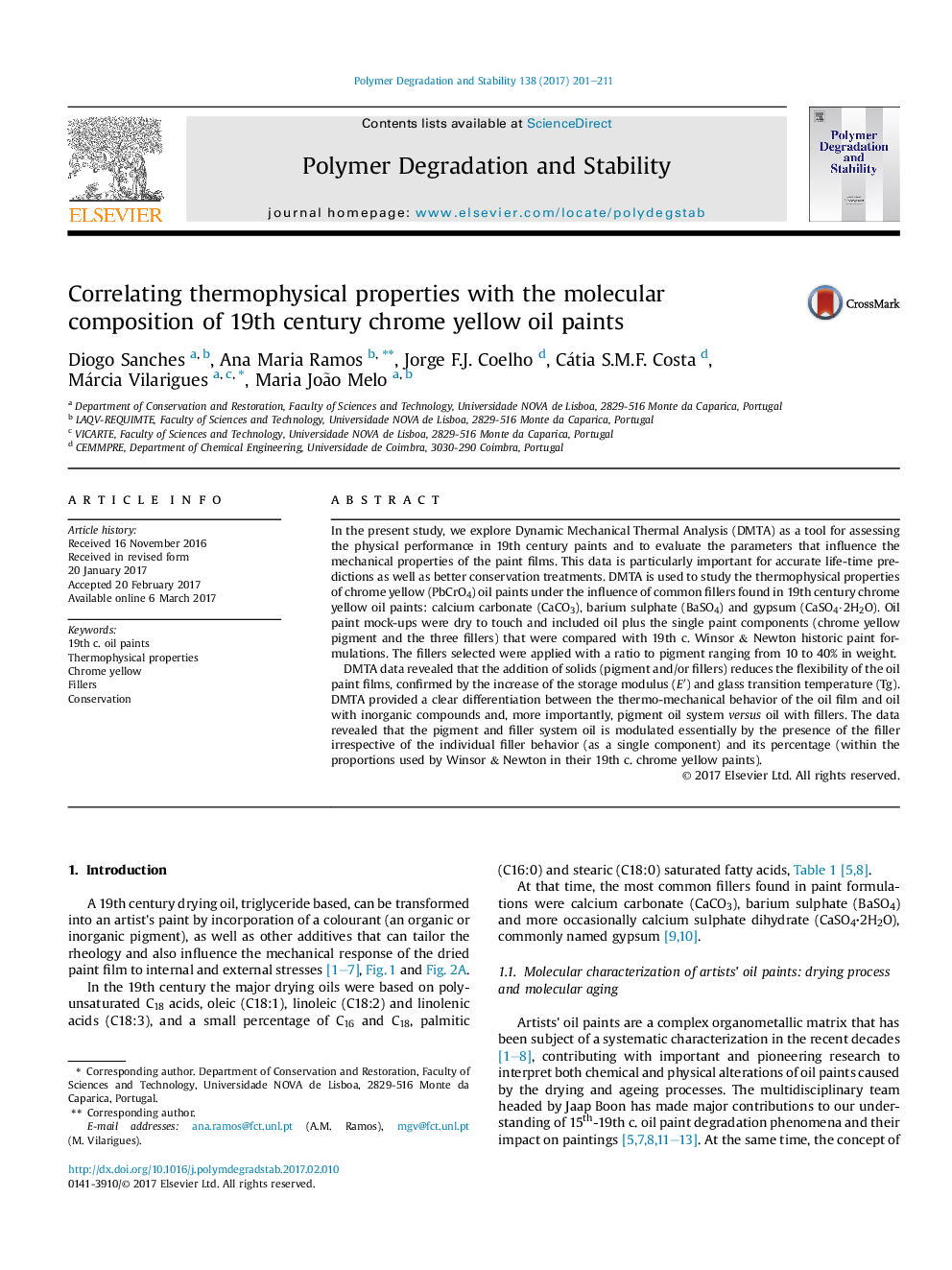| Article ID | Journal | Published Year | Pages | File Type |
|---|---|---|---|---|
| 5200850 | Polymer Degradation and Stability | 2017 | 11 Pages |
In the present study, we explore Dynamic Mechanical Thermal Analysis (DMTA) as a tool for assessing the physical performance in 19th century paints and to evaluate the parameters that influence the mechanical properties of the paint films. This data is particularly important for accurate life-time predictions as well as better conservation treatments. DMTA is used to study the thermophysical properties of chrome yellow (PbCrO4) oil paints under the influence of common fillers found in 19th century chrome yellow oil paints: calcium carbonate (CaCO3), barium sulphate (BaSO4) and gypsum (CaSO4·2H2O). Oil paint mock-ups were dry to touch and included oil plus the single paint components (chrome yellow pigment and the three fillers) that were compared with 19th c. Winsor & Newton historic paint formulations. The fillers selected were applied with a ratio to pigment ranging from 10 to 40% in weight.DMTA data revealed that the addition of solids (pigment and/or fillers) reduces the flexibility of the oil paint films, confirmed by the increase of the storage modulus (Eâ²) and glass transition temperature (Tg). DMTA provided a clear differentiation between the thermo-mechanical behavior of the oil film and oil with inorganic compounds and, more importantly, pigment oil system versus oil with fillers. The data revealed that the pigment and filler system oil is modulated essentially by the presence of the filler irrespective of the individual filler behavior (as a single component) and its percentage (within the proportions used by Winsor & Newton in their 19th c. chrome yellow paints).
